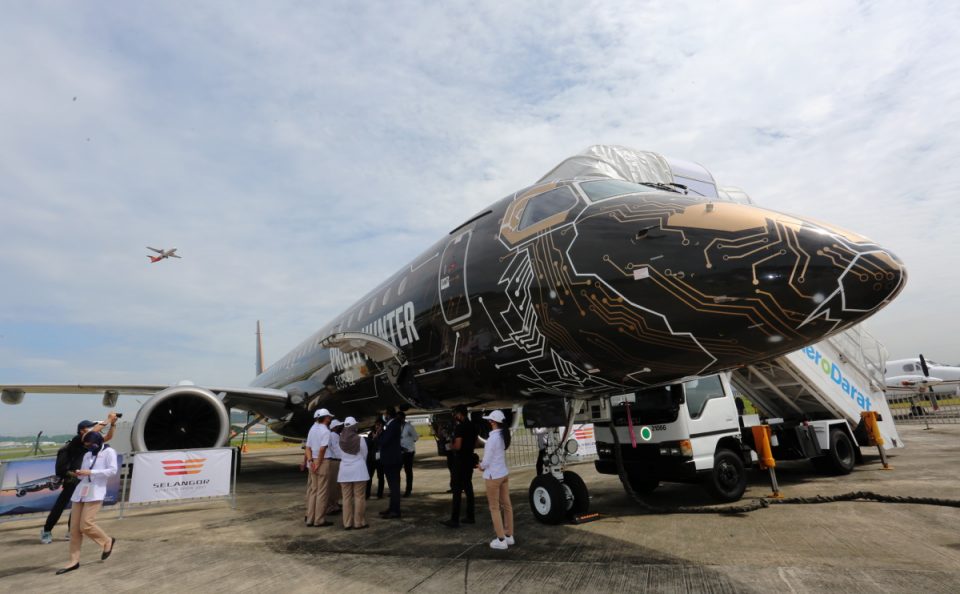KUALA LUMPUR, Jan 3 — Brazilian aircraft manufacturer, Embraer, aims to tap into the growing demand for narrow-body aircraft in the Asia-Pacific, including Malaysia, as the country aims to be a major aerospace hub in the region.
According to Embraer Asia-Pacific vice-president Raul Villaron, the aircraft manufacturer is in talks with many airlines across the region including Malaysia, which are looking at how the E-Jets could make a difference to their network and business.
“Embraer has close to 20 operators in the Asia Pacific, collectively operating around 200 E-Jets in the region,” he told Bernama, adding that these airlines were based in countries such as China, Japan, Australia, India, and Vietnam.
In 2024, he expects to welcome Singapore’s Scoot and SKS Airways in Malaysia as the airlines start to operate their latest generation E190-E2 and E195-E2 aircraft, respectively.
“As such, we see opportunities for our footprint to grow further with rising demand,” he pointed out.
Malaysia aspires to be the leading aerospace hub in Southeast Asia by 2030 through the implementation of the 12th Malaysia Plan aerospace industry framework led by the National Aerospace Industry Corporation Malaysia (Naico).
Growing interest in E-Jets
Villaron explained that the versatility of small narrow-body types such as E-Jets have enabled airlines to maintain, or strategically grow their regional networks while keeping a close eye on operating costs and cash flow.
“We also see a change in approach among airlines, whereby they are shifting from the pre-held notion of single-fleet type to embrace the value of fleet flexibility, that is, having the diversity of aircraft type that gives the airline choice to deploy aircraft of large or smaller capacity on a chosen route to match passenger demand,” he said.
Hence, he sees growing interest among airlines in the region in regional jets or narrow-bodies such as E-Jets, which have a capacity of 70 to 150 seats.
“In addition, the Embraer E-Jets are city airport specialists and are prevalent in city airports around the world. Its low noise emissions make the E195-E2 perfect for flights in and out of the Sultan Abdul Aziz Shah Airport in Subang,” he said.
On May 25, SKS Airways committed to leasing 10 Embraer E195-E2 single-aisle jets in a deal worth more than US$840 million from lessor Azorra during the Langkawi International Maritime and Aerospace 2023 exhibition.
“This year, SKS Airways is poised to induct its first batch of E195-E2s and start operations, in which our services and support team are working very closely with them, while the team at SKS undergo training and preparations as part of our ‘Entry into Service’ process.
“We have a strong infrastructure to support E-Jet operators in the region – a new E-Jets E2 simulator that will support pilot training needs,” Villaron said.
Efficient aircraft way to tackle global risk
Touching on the global risk, he said inflation and rising costs have placed greater pressure on airlines to watch their operating costs and cash flow.
“Increasingly, airlines will look to having efficient aircraft in their fleet that will enable them to grow their network while keeping operating costs and cash flow in check,” he said.
The International Air Transport Association projected the airline industry net profits to reach US$25.7 billion in 2024 on a 2.7 per cent net profit margin, total revenues to grow 7.6 per cent year-over-year to a record US$964 billion, while 4.7 billion people are expected to travel this year, a historic high that exceeds the pre-pandemic level of 4.5 billion recorded in 2019.
On tackling the rising fuel price, Villaron said the E195-E2 and E190-E2 contribute lower levels of carbon emissions when compared to large narrow-bodies and reduce carbon emissions by up to 50 per cent compared to prior generation narrow-body types such as the B737-800 or A320ceo.
“The E-Jet E2 family of aircraft, consisting of E190-E2 and E195-E2, are certified to use 50 per cent sustainable aviation fuel (SAF) and in 2022, tests have shown that the E195-E2 is compatible to run on 100 per cent SAF for commercial flights,” he said.
He also noted that the replacement of older aircraft with new-generation products and scaling up SAF production would be the two most effective actions commercial aviation can take now to achieve a significant reduction in emissions.
“In 2026, the zero-emissions electric vertical take-off and landing aircraft developed by Embraer’s spinoff company EVE is poised to enter into service too,” he added.
— Bernama





